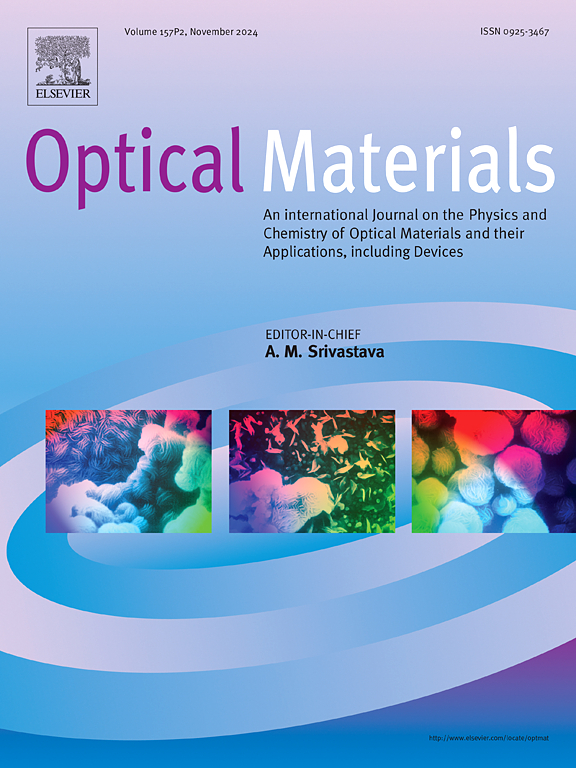Effect of impurities on RPL properties of CaSO4
IF 3.8
3区 材料科学
Q2 MATERIALS SCIENCE, MULTIDISCIPLINARY
引用次数: 0
Abstract
This study aimed to develop an optimal RPL material by adding impurities such as (Al₂O₃, Mn₂O₃, P, and Si) to CaSO₄ and evaluating the radiophotoluminescence (RPL) properties. Adding P to CaSO₄ was found to improve the RPL response significantly. The effect of P concentration on RPL properties were investigated, and it was found that the optimal P concentration was about 0.5 % and that excessive concentrations of P reduced the RPL response. The evaluation of defect species in CaSO₄ using ESR measurements showed a robust correlation between the RPL response and the E′ centers, with a significant increase in SO ₂-, PO₄2- and Al₂O₃ were also correlated with RPL. In high-dose irradiation, the RPL intensity and the spin density of defect species by ESR increased linearly to about 10 Gy and 1000 Gy (1 kGy), respectively, but saturation was observed above that level. This paper contributes to the optimization and characterization of CaSO₄ with P as an RPL material to make CaSO4 a more accurate RPL dosimeter.
求助全文
约1分钟内获得全文
求助全文
来源期刊

Optical Materials
工程技术-材料科学:综合
CiteScore
6.60
自引率
12.80%
发文量
1265
审稿时长
38 days
期刊介绍:
Optical Materials has an open access mirror journal Optical Materials: X, sharing the same aims and scope, editorial team, submission system and rigorous peer review.
The purpose of Optical Materials is to provide a means of communication and technology transfer between researchers who are interested in materials for potential device applications. The journal publishes original papers and review articles on the design, synthesis, characterisation and applications of optical materials.
OPTICAL MATERIALS focuses on:
• Optical Properties of Material Systems;
• The Materials Aspects of Optical Phenomena;
• The Materials Aspects of Devices and Applications.
Authors can submit separate research elements describing their data to Data in Brief and methods to Methods X.
 求助内容:
求助内容: 应助结果提醒方式:
应助结果提醒方式:


